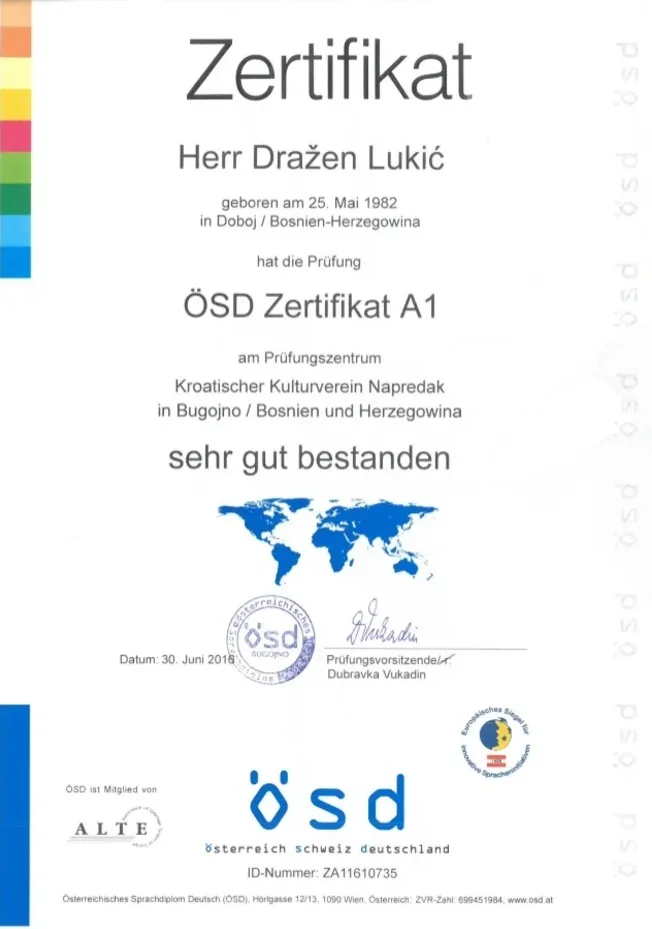Comprehending the ÖSD Certificate: Your Gateway to German Proficiency
In an increasingly globalized world, efficiency in numerous languages is an important property. For those thinking about the German language, the ÖSD (Österreichisches Sprachdiplom) certificate stands apart as a recognized qualification. This article dives into what the ÖSD certificate is, its significance, the structure of the exams, preparation suggestions, and responses to often asked concerns.
What is the ÖSD Certificate?
The ÖSD certificate is an official language certificate issued by the Österreichisches Sprachdiplom Deutsch, or the Austrian Language Diploma in German. It assesses the language efficiency of non-native speakers and abides by the Common European Framework of Reference for Languages (CEFR). The ÖSD licenses language skills varying from A1 (newbie) to C2 (competent), covering four essential competencies: reading, composing, listening, and speaking.
Value of the ÖSD Certificate
Obtaining an ÖSD certificate holds significance for different reasons:
Educational Opportunities: Many universities and universities in German-speaking nations require evidence of German language efficiency for admission. The ÖSD certificate serves as legitimate proof of a candidate's language abilities.
Employment Prospects: In a competitive job market, an acknowledged language certificate can enhance a prospect's employability, especially in roles needing German as a primary language.
Migration Requirements: Some immigration processes in German-speaking nations necessitate language proficiency certificates. The ÖSD is extensively accepted by different authorities, making it a vital asset for those transferring to Austria or Germany.
Structured Learning: Preparing for the ÖSD certificate encourages learners to establish a well-rounded understanding of the language, helping in both academic and everyday interaction.
Structure of the ÖSD Exam
The ÖSD certificate incorporates different levels of evaluation, lining up with the CEFR. The assessment structure includes the following components:
Levels Offered:
A1: Beginner
A2: Elementary
B1: Intermediate
B2: Upper Intermediate
C1: Advanced
C2: Proficient
Elements of the Exam:
The ÖSD examinations are developed to evaluate the following language abilities:
Listening Comprehension: Candidates listen to audio excerpts and answer questions to show understanding.
Reading Comprehension: This involves reading passages and responding to questions to reveal interpretation and understanding.
Writing: Test-takers engage in written tasks, such as making up letters or essays, to exhibit their ability to articulate ideas on paper.
Speaking: In this section, candidates take part in discussions or monologues, showcasing their verbal interaction abilities.
Exam Format:
Tests can take different formats, consisting of:
Paper-based: Traditional examinations undertaken face to face at designated screening centers.
Computer-based: Digital assessments readily available in some areas, offering versatility and benefit.
Preparing for the ÖSD Exam
Preparation for the ÖSD certificate needs a structured approach. Here are some efficient strategies:
Establishing a Study Plan:
Evaluate Your Level: Determine your present proficiency level through practice tests.
Set Goals: Establish clear, attainable goals for each language ability (listening, reading, composing, speaking).
Daily Practice: Allocate time every day for language study and practice different abilities to construct a detailed command of German.
Resources for Study:
Language Courses: Consider enrolling in language courses, either in-person or online, specifically created for ÖSD preparation.
Books and Workbooks: Utilize products that align with the CEFR levels and cover all 4 competencies.
Online Platforms: Websites, apps, and online forums offer interactive workouts and community support.
Sample Exams: Familiarize yourself with the test format by practicing with sample concerns and previous tests.
Engaging with German:
Immerse Yourself: Surround yourself with the language through music, films, and podcasts.
Language Exchange: Partner with native speakers or classmates to practice conversational abilities.
Sign Up With Study Groups: Collaborating with peers can foster a helpful learning environment and enhance motivation.
Regularly Asked Questions (FAQs).
1. The length of time does the ÖSD certificate remain legitimate?
The ÖSD certificate does not have an expiration date, but prospects are recommended to upgrade their abilities regularly, especially for professional or academic functions.
2. Where can I take the ÖSD exam?
The ÖSD exams are administered at different certified examination centers worldwide. A list of areas can normally be found on the main ÖSD website.
3. How much does the ÖSD exam cost?
Exam charges vary by area and level. It is recommended to contact regional testing centers for accurate prices.
4. Can I retake the ÖSD exam if I do not pass?

Yes, sprachzertifikat can retake the exam as many times as necessary to achieve their preferred efficiency level.
5. Exist specific research study materials suggested for the ÖSD certificate?
While no official products are mandated, it is beneficial to use books tailored to language efficiency examinations and undertake practice tests.
Conclusion.
The ÖSD certificate functions as a credible criteria of German language proficiency, opening doors to educational, expert, and immigration chances. With a well-structured preparation strategy, committed practice, and the best resources, striving candidates can improve their language abilities and embark on a successful journey in mastering the German language. Whether for sprachzertifikat or personal enrichment, the ÖSD certificate represents a significant step towards becoming competent in German.
